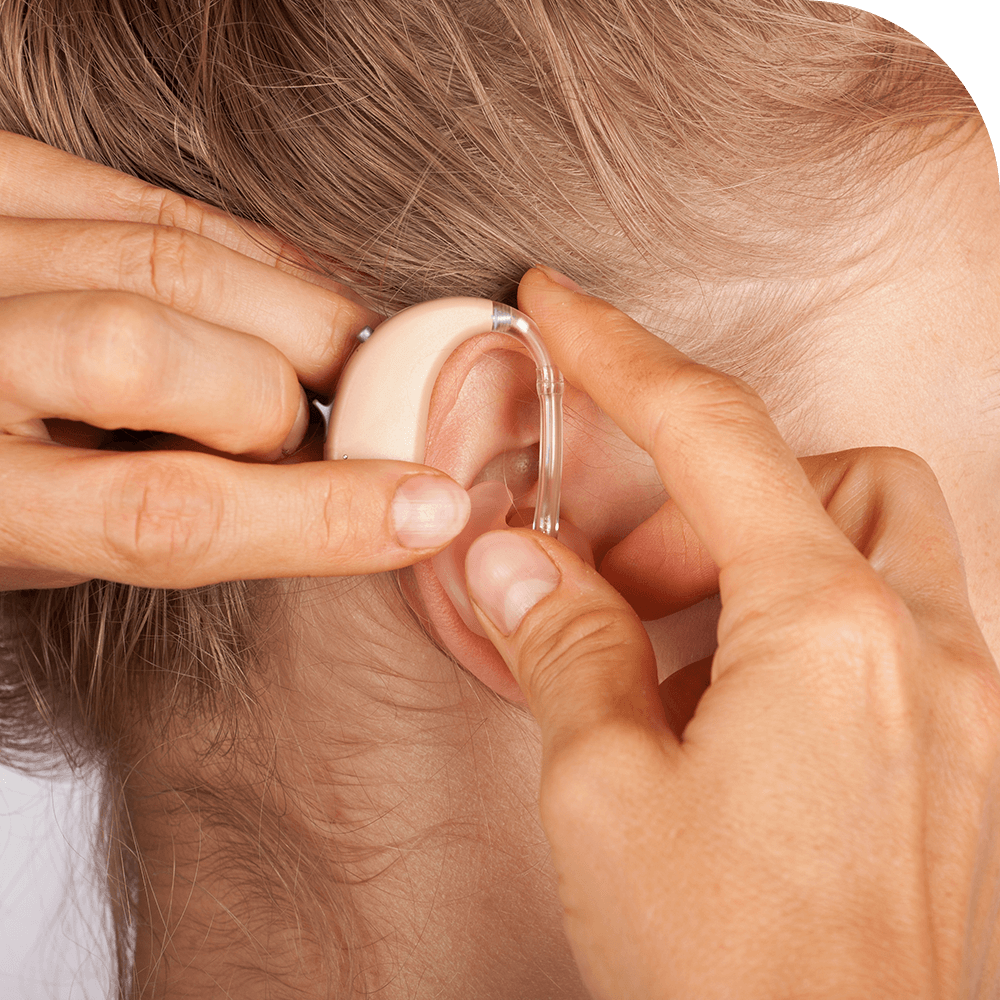Understanding Hearing Aids: A Guide to How They Function

Hearing aids are remarkable inventions that significantly improve your auditory experience. But to understand how do hearing aids work, it’s essential to first know the basics of how we hear.
Understanding Hearing
Our ability to hear is a sophisticated process. It begins with sound waves entering the outer ear and traveling down the ear canal to the eardrum. These waves make the eardrum vibrate, and these vibrations are then amplified by three tiny bones in the middle ear. The amplified vibrations travel to the cochlea in the inner ear, where they are transformed into electrical signals by hair cells on the basilar membrane. These signals are then sent to the brain via the auditory nerve, which interprets them as the sounds we recognize and understand.
How Do Hearing Aids Work? The Inner Workings of Hearing Aids
Hearing aids are designed to amplify sound effectively. They consist of a microphone, an amplifier, and a receiver. The microphone captures sound waves from the environment, converting them into electrical signals. These signals are then boosted by the amplifier and sent to the receiver, which delivers the amplified sound into your ear.

How Does the Hearing Aid Work? The Role of Additional Components
Apart from these primary parts, hearing aids also include earmolds or Behind-The-Ear (BTE) units, batteries, volume controls, program buttons, and telecoils. Earmolds and BTE units ensure comfort and effective sound delivery, while batteries power the device. Volume controls and program buttons allow users to adjust the hearing aid settings according to different environments. Telecoils enhance sound pickup, particularly in public spaces.
How Do Hearing Aids Work? The Journey of Sound Through a Hearing Aid
The process starts with the microphone picking up various sounds. These sounds are then amplified by the amplifier and analyzed by the Digital Signal Processor (DSP). The DSP filters and customizes the sound according to your needs. Finally, the receiver converts these tailored signals back into sound waves, which reach your brain as meaningful auditory information.
How Do Different Types of Hearing Aids Work?
Hearing aids come in various styles, each with its own method of processing sound. Analog hearing aids amplify all sounds uniformly and are suitable for mild hearing loss. Digital hearing aids, on the other hand, offer enhanced sound clarity and a personalized experience. They filter background noise, adjust frequencies, and provide customizable settings for different environments. Receiver-in-Canal (RIC) aids are known for their natural sound quality, In-the-Ear (ITE) aids for their discreetness and ease of use, and Behind-the-Ear (BTE) aids for their robust amplification capabilities.
Discover more about types of hearing aids.
How Do Hearing Aids Work With Background Noise?
Directional microphones and noise reduction are key features in modern hearing aids. Directional microphones focus on the sound source in front of you, while noise reduction technologies filter out unwanted background noise. These features work together to enhance speech clarity and reduce listening effort.
How Do Rechargeable Hearing Aids Work?
Rechargeable hearing aids offer convenience and eco-friendliness. They use lithium-ion batteries for long-lasting power and can be easily recharged overnight. This design is especially beneficial for those with dexterity issues.
Customizing Your Hearing Experience with Programs and Settings
Modern hearing aids come with various programs and adjustable settings to optimize sound in different environments. These include settings for speech focus, noise reduction, outdoor environments, and music listening. Adjustable features like volume control, bass and treble tuning, and microphone directionality further enhance the user experience.
Read more about rechargeable hearing aids.
How Do Hearing Aids Work? Connectivity:
Bluetooth technology has revolutionized hearing aids, transforming them into advanced devices that do much more than amplify sound. They offer a wide range of connectivity options, enhancing both sound quality and user engagement in everyday life. Let’s explore how Bluetooth hearing aids work and the benefits they bring.
Understanding Bluetooth Connectivity in Hearing Aids:
- Bluetooth hearing aids provide a seamless, wire-free connection to various devices like phones, TVs, and computers. Here’s how they operate:
- Pairing Process: Just like pairing a smartphone with wireless headphones, hearing aids connect to Bluetooth-enabled devices. They exchange radio signals within about 30 feet to establish a connection.
- Audio Streaming: After pairing, the device sends audio signals in a compressed format to the hearing aids. This efficient transmission ensures seamless sound delivery.
- Decoding and Amplification: The hearing aids then decode this compressed audio back into its original form and amplify it. This process is tailored to your personal hearing settings, ensuring the sound you receive is clear and comfortable.
Technical Aspects to Consider:
- Bluetooth Versions: The version of Bluetooth used in hearing aids affects stability, range, and audio quality. Hearing aids with Bluetooth 4.2 or later are generally recommended for the best experience.
- Battery Life: Streaming audio via Bluetooth can consume more battery power. It’s advisable to have spare batteries or consider rechargeable models for uninterrupted use.
Bluetooth technology in hearing aids opens up a world of possibilities, from enjoying diverse audio experiences to convenient control and clear communication.
Explore more about Bluetooth hearing aids.

Embrace the Future of Hearing
To discover more about how hearing aids can transform your auditory experience, visit us at Stanford Hearing. Our team of experts will guide you through understanding how do hearing aids work and help you find the perfect device to suit your needs. Let us help you reconnect with the sounds of life.
